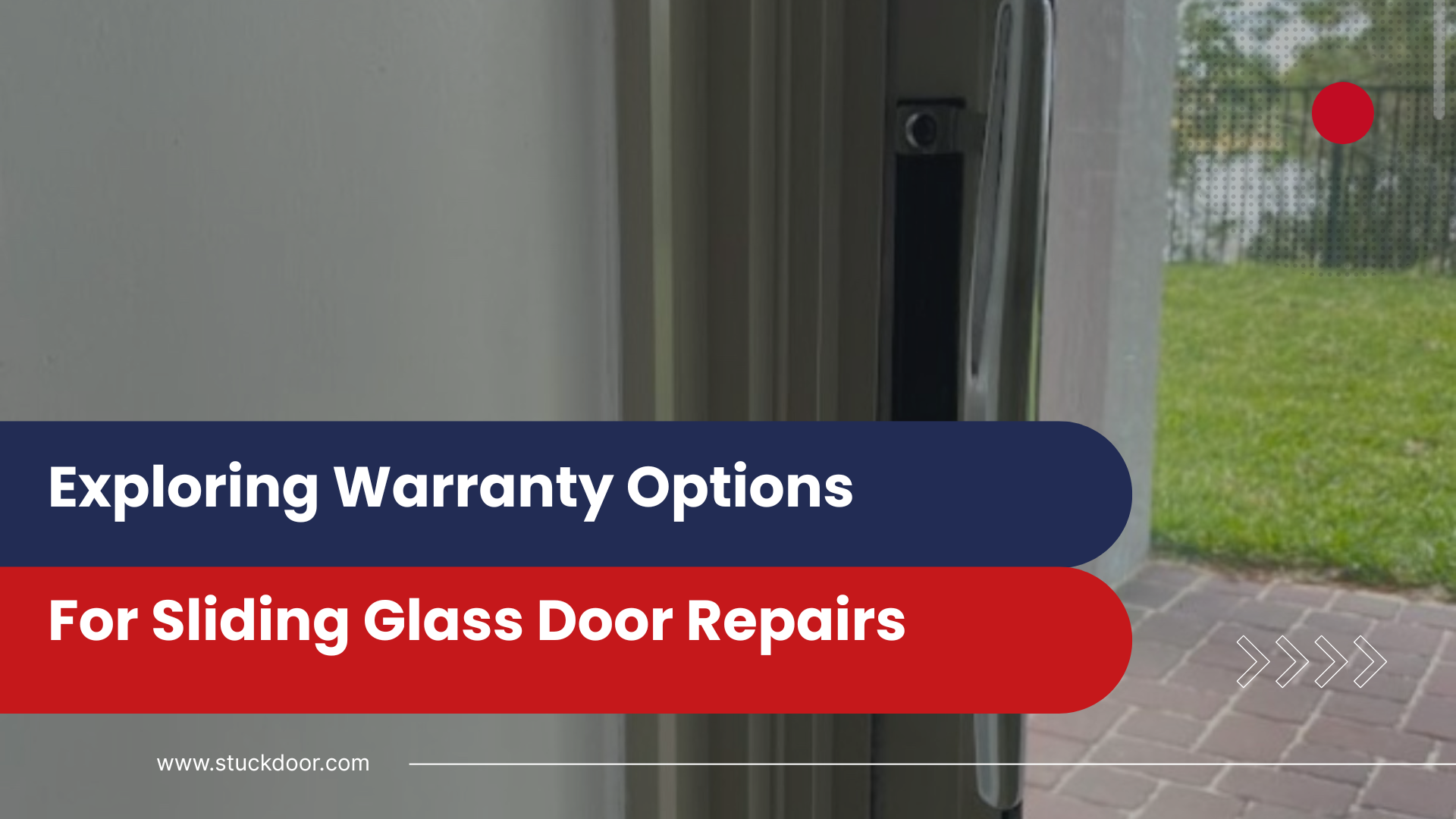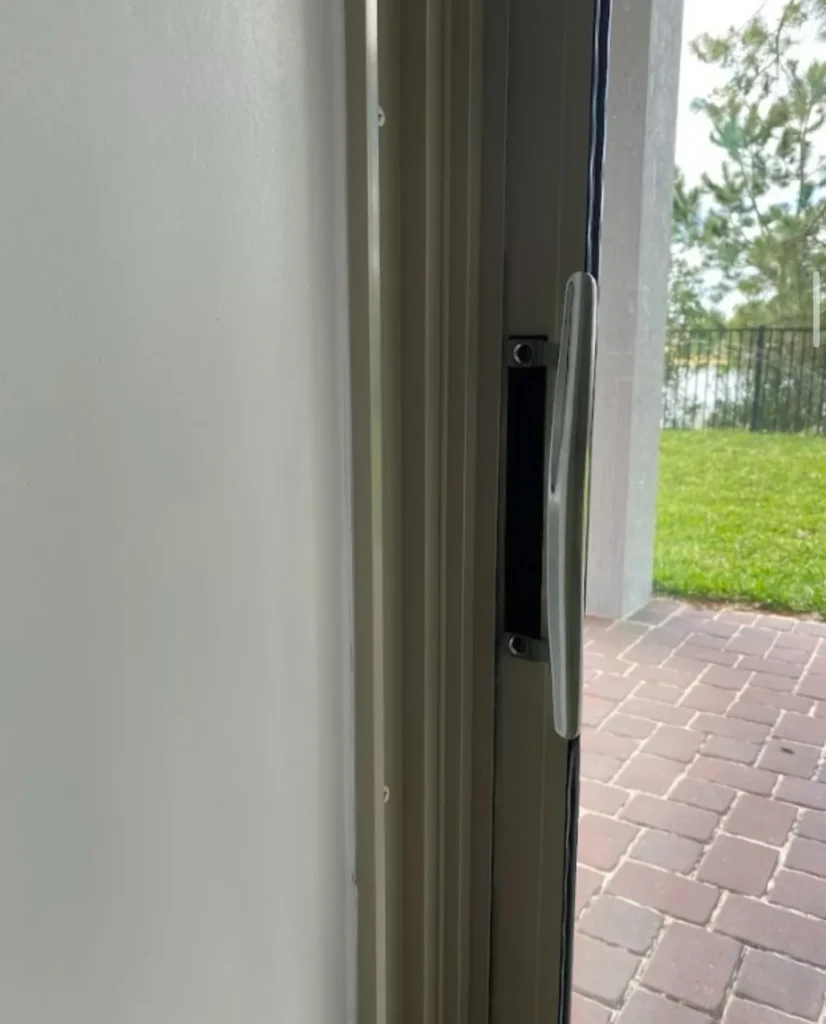
You just noticed a crack in your sliding glass door. Or maybe the rollers finally gave out after years of use. Your first thought: “Is this covered by warranty?”
It’s a question we hear almost daily, and the answer is frustratingly complicated. Your sliding glass door might be covered by multiple warranties—manufacturer, installer, homeowners insurance, or even a home warranty policy. Or it might be covered by none of them. The difference between a free repair and a $500-$1,500 out-of-pocket expense often comes down to understanding exactly what coverage you have.
Let’s untangle the warranty maze so you know exactly where you stand when something goes wrong with your sliding glass door.

Alt text: “Manufacturer and installer warranty documents for sliding glass door repairs in Orlando home”
Most Orlando homeowners don’t realize they potentially have four different types of coverage for their sliding glass doors. Let’s break them down.
This is the warranty from the company that made your door—brands like Pella, Andersen, Milgard, or PGT.
What it typically covers:
What it doesn’t cover:
Typical duration: Major manufacturers often provide warranties ranging from 10 years to lifetime coverage, but coverage details vary significantly by component.
Many product warranties cover the cost of labor for the first two years from purchase date, after which you pay for installation costs even if the part is free.
This covers the workmanship and installation quality—that’s where Posada Remodeling & Design’s warranty comes in.
What it typically covers:
What it doesn’t cover:
Typical duration: 1-5 years depending on the contractor. Quality installers like us stand behind our work with comprehensive workmanship guarantees.
Your home insurance can cover sliding glass door damage as long as it’s caused by a covered peril in your policy.
What it typically covers:
What it doesn’t cover: Insurance does not cover repair of damage due to old age, as normal wear and tear is expected, nor does it cover damage from lack of maintenance.
Important consideration: Your deductible matters. Weighing the cost of repair versus your deductible is essential before filing a claim.
These are separate optional policies some homeowners purchase for home systems and appliances.
The catch: Even if you have a separate home warranty policy on top of your homeowners insurance, it won’t cover structural features like windows and doors.
Most home warranties explicitly exclude doors and windows, though some premium policies may offer limited coverage. Always read the fine print.
[Image suggestion: Venn diagram showing overlap and gaps between different warranty types]
Alt text: “Venn diagram illustrating coverage overlap between manufacturer warranty, installer warranty, and homeowners insurance for sliding doors”
Let’s get into the details of what each warranty type covers for common sliding glass door problems.
Seal failure causing fogging:
Cracked or shattered glass:
Scratched or damaged glass:
Roller failure or wearing out:
Lock mechanism failure:
Handle breaking or loosening:
Frame warping or deterioration:
Weatherstripping failure:
Track damage or misalignment:
[Image suggestion: Close-up photos of common warranty-covered vs non-covered issues]
Alt text: “Examples of covered versus non-covered sliding door issues including seal failure, roller wear, and glass damage”
When something goes wrong, follow this decision tree:
Ask yourself:
You need to locate:
Pro tip: Can’t find your warranty documents? Contact the manufacturer with your door’s model and serial number. They can often look up your warranty coverage.
Is it a defect or wear and tear?
Was it sudden or gradual?
When did it happen?
For defects within warranty period: Start with the installer who can often coordinate with manufacturer
For storm or accident damage: Contact your homeowners insurance company
For unclear situations: Call your installer for guidance—we do this regularly and can help identify the right coverage path
Living in Central Florida adds some unique factors to warranty coverage.
Orlando’s hurricane risk creates special warranty considerations.
Impact-resistant doors:
Hurricane-related claims:
Important: Your homeowners insurance covers wind damage but typically not flood damage (requires separate flood insurance).
Orlando’s climate is tough on sliding doors.
Seal failures:
Frame deterioration:
Condensation vs. seal failure:
Warranty consideration: Repairs or replacements must meet current Florida Building Code. If your original door was installed before recent code updates, warranty work might require upgrades to meet current standards.
This can add costs even when the repair itself is covered.
[Image suggestion: Hurricane-damaged sliding door with insurance claim documentation]
Alt text: “Storm-damaged sliding glass door in Orlando with insurance claim forms and documentation for warranty coverage”
Here’s how to successfully navigate the warranty claim process.
Step 1: Document everything
Step 2: Contact the installer first Many manufacturers require claims to go through authorized installers. We handle this regularly for our clients and can expedite the process.
Step 3: Provide required information
Step 4: Wait for assessment Manufacturer may send an inspector or request more information
Step 5: Get approval and schedule repair Once approved, coordinate repair scheduling (often 2-4 weeks for parts)
Step 1: Contact your installer directly Call or email with details of the issue
Step 2: Schedule inspection Most installers will come assess the problem within a few days
Step 3: Determine if installation-related The installer will assess whether the issue stems from workmanship
Step 4: Coordinate repair If covered, most installers schedule repairs quickly (within 1-2 weeks)
Why we prefer this route: At Posada Remodeling & Design, we stand behind our work. If we installed it and there’s an issue, we want to make it right immediately.
Step 1: Document damage immediately
Step 2: Make temporary repairs if necessary Secure your home to prevent further damage (board up broken glass, etc.)
Step 3: Contact your insurance company promptly File the claim as soon as possible—delays can cause issues
Step 4: Meet with adjuster Insurance will send an adjuster to assess damage and determine coverage
Step 5: Get multiple repair estimates Insurance may require estimates from licensed contractors
Step 6: Coordinate payment and repair Work with approved contractors; understand your deductible responsibility
Important: Never make permanent repairs before the adjuster inspects, as this can void your claim.
[Image suggestion: Homeowner on phone filing insurance claim with damaged door visible]
Alt text: “Orlando homeowner filing insurance claim for damaged sliding glass door with adjuster on phone”
After handling hundreds of warranty situations, these are the mistakes we see repeatedly.
Many manufacturer warranties require registration within 30-90 days of installation.
How to avoid: Register immediately upon installation. Set a phone reminder to follow up and confirm registration.
Proactive maintenance and routine checking of rails, rollers, and seals can be a safeguard against preventable damages and can support warranty claims.
How to avoid: Keep a simple log of maintenance performed. Photos of regular cleaning and lubrication help if warranty coverage is questioned.
Using unlicensed contractors can void manufacturer warranties.
How to avoid: Always verify contractors are licensed and insured. Ask if they’re authorized installers for major brands.
Making repairs yourself before contacting warranty providers can void coverage.
How to avoid: Call first, repair second. Even if it seems simple, unauthorized repairs can be used to deny claims.
Warranties have specific timeframes for reporting issues.
How to avoid: Address problems immediately when noticed. Don’t wait and hope it resolves itself.
Assuming something is covered when it’s not leads to disappointment and unexpected expenses.
How to avoid: Read warranty documents thoroughly. When in doubt, call and ask specific questions.
Sometimes, despite all warranties and insurance, you’re responsible for the repair cost. Here’s how to handle it.
Contact at least 2-3 licensed contractors for estimates. Prices can vary significantly.
If the door poses security risks or weather protection issues, address it immediately even if costly.
Sometimes a full replacement makes more financial sense than expensive repairs on an old door.
Rule of thumb: If repair costs exceed 50% of replacement cost and the door is over 15 years old, replacement is usually smarter.
Many contractors, including Posada Remodeling & Design, offer financing for unexpected repairs.
Once repaired, commit to regular maintenance to prevent future issues and extend your door’s life.
If you’re purchasing a new door, ask these warranty questions upfront:
These questions reveal how seriously the contractor takes warranty support.
[Image suggestion: Checklist of warranty questions with sliding door showroom in background]
Alt text: “Warranty questions checklist for Orlando homeowners shopping for new sliding glass doors”
Sliding glass doors are significant investments, often costing $2,000-$4,000 or more. Understanding your warranty coverage isn’t just about saving money on repairs—it’s about getting the performance and longevity you paid for.
Key takeaways:
Most important: Build a relationship with a trusted contractor who can guide you through warranty situations. We’ve successfully helped hundreds of Orlando homeowners navigate complex warranty claims, saving them thousands of dollars in the process.
Need help understanding your sliding door warranty coverage or making a claim? Contact Posada Remodeling & Design for expert guidance. We work with all major door manufacturers, understand insurance claim processes, and can help determine the best path forward for your specific situation. As licensed installers with 14 years in the Orlando area, we’ve seen every warranty scenario and know how to get you the coverage you deserve.
Don’t navigate the warranty maze alone—let our experience work for you.
Stuck Door helps fix and install sliding doors in Winter Garden, Clermont, Windermere, and across Central Florida. Our friendly expert technicians have years of experience making sure homes and businesses have reliable doors that work perfectly.
Windermere • Doctor Phillips • Lake Nona • Winter Garden • Clermont • Minneola • Groveland • Ocoee • Apopka • Winter Park • Maitland • Kissimmee • Horizon West • Altamonte Springs
Sliding glass door experts, built for Florida homes—call us today.